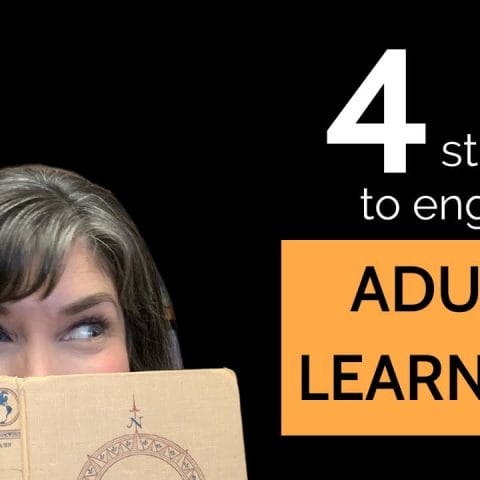Are traditional training methods holding your organization back? Are you looking for ways to enhance training efficiency and learner flexibility? Discover the power of blended learning, a cutting-edge approach that combines in-person and online methods of education. But how exactly does blended learning work, and what benefits does it offer?
Key Takeaways:
- Blended learning combines in-person and online methods of education.
- Benefits include cost reduction, shorter training sessions, and 24/7 accessibility to learning resources.
- Implementing blended learning requires careful design and a transition process.
- Learners benefit from flexibility and a personalized learning experience.
- Organizations can leverage blended learning for scalability and reaching a wider audience.
Why Does Blended Learning Make Business Sense?
Blended learning solutions offer a range of advantages that make them a smart choice for businesses seeking effective training methods. By combining Instructor-Led Training (ILT) with online learning, organizations can achieve cost reduction, shorter training sessions, scalability, and reach a wider audience with a consistent message.
One of the key benefits of blended learning is cost reduction. Traditional ILT often incurs expenses such as travel, accommodation, and materials. By incorporating online learning into the training program, organizations can significantly cut these costs while still delivering high-quality education.
Blended learning also allows for shorter training sessions, making it convenient for both learners and trainers. Learners can access information at their own pace and revisit content when needed, while trainers can focus on delivering essential information in the facilitated sessions.
Scalability is another advantage of blended learning solutions. With a combination of online modules and ILT, organizations can easily accommodate a growing number of participants without compromising the quality of instruction. This scalability enables businesses to effectively train employees in various locations without incurring additional expenses.
Learner preferences play a crucial role in the success of any training program. Blended learning caters to diverse learning preferences by offering a mix of online and facilitated sessions. This flexibility allows learners to customize their learning experience and access resources when needed, enhancing engagement and knowledge retention.
Blended learning solutions provide cost reduction, shorter training sessions, scalable training, and the ability to reach a wider audience with a consistent message. Learners benefit from a mix of online and facilitated sessions that cater to their learning preferences and offer access to resources when needed.
Benefits of Blended Learning in Business
1. Cost reduction by eliminating expenses associated with traditional ILT.
2. Shorter training sessions that maximize learners’ time and trainers’ effectiveness.
3. Scalability to accommodate a growing number of participants without compromising quality.
4. Customized learning experiences that cater to individual learner preferences.
A Comparison of Blended Learning and Traditional ILT
| Aspect | Blended Learning | Traditional ILT |
|---|---|---|
| Cost | Reduces expenses associated with travel, accommodation, and materials. | Incur additional costs for travel, accommodation, and materials. |
| Time | Shorter training sessions due to the flexibility of online learning. | Longer sessions required to cover all content in person. |
| Scalability | Can accommodate a larger audience without additional costs. | May require additional resources to accommodate a growing number of participants. |
| Flexibility | Customizable learning experiences that cater to individual preferences. | Limited flexibility in terms of pacing and access to resources. |
Benefits of Blended Learning for Learners and Organizations

Blended learning solutions offer a range of benefits for learners and organizations, fostering a learner-centric approach, 24/7 accessibility to resources, ongoing learning opportunities, lower costs, and the ability to leverage facilitated sessions.
Learner-Centric Approaches
Blended learning puts learners at the center of the educational experience. By combining both online and facilitated sessions, learners have the flexibility to engage with content in a way that suits their individual preferences and learning styles. This learner-centric approach enhances engagement and promotes a deeper understanding of the material.
24/7 Accessibility to Resources
One of the main advantages of blended learning is the 24/7 accessibility to learning resources. With online components available at any time, learners can access course materials, videos, and interactive tools whenever they need them. This flexibility allows learners to review and reinforce their understanding, even outside of scheduled training sessions.
Ongoing Learning Opportunities
Blended learning provides ongoing learning opportunities beyond traditional facilitated sessions. Learners can continue to engage with the material through online discussions, collaborative projects, and self-paced activities. This ongoing learning ensures that knowledge retention is enhanced and encourages a continuous learning mindset.
Lower Costs
Blended learning offers cost-saving benefits compared to traditional facilitated sessions. By leveraging on facilitated sessions as well as online components, organizations can reduce expenses associated with travel, venue rental, and instructor fees. Additionally, the ability to leverage and reuse training materials further contributes to cost savings.
Leverage on Facilitated Sessions
Blended learning allows organizations to maximize the value of facilitated sessions by focusing on interactive and hands-on activities. With online components providing background knowledge and pre-work, facilitated sessions can be dedicated to deepening understanding, skill practice, and collaborative work. This targeted use of facilitated sessions ensures that learners gain the most from their face-to-face interactions and optimizes the learning experience.
| Benefits of Blended Learning |
|---|
| Learner-centric approach |
| 24/7 accessibility to resources |
| Ongoing learning opportunities |
| Lower costs |
| Leverage on facilitated sessions |
Blended learning provides a learner-centric approach, 24/7 accessibility to resources, ongoing learning opportunities, lower costs, and the ability to leverage facilitated sessions. By embracing these benefits, organizations can create a dynamic and effective learning environment that caters to the needs of learners and optimizes training outcomes.
Designing Successful Blended Learning Solutions
Implementing blended learning poses several key challenges that need to be addressed for a successful transition to a blended mode. These challenges include uncertainty, lack of buy-in from stakeholders, resource limitations, and the need to convince trainers about the benefits of blended learning. Overcoming these challenges requires strategic planning, effective change management, and a focus on the suitability of content.
Key Challenges in Designing Blended Learning Solutions
The transition to blended learning may encounter resistance from stakeholders who are accustomed to traditional training methods. Convincing them about the benefits of blended learning and securing their buy-in is crucial for successful implementation. Furthermore, it is essential to address resource limitations, such as limited access to technology or inadequate infrastructure, to ensure a seamless learning experience for all participants.
“The success of blended learning hinges on gaining the buy-in and support of all stakeholders. Open communication and clear explanations of the benefits will help overcome skepticism and facilitate a smooth transition.”
Addressing the Suitable Content
Designing blended learning solutions involves carefully curating content that is suitable for both online and in-person delivery. The content should cater to various learning styles and be adaptable to different modes of instruction. Ensuring that the content is engaging, interactive, and aligned with the learning objectives will enhance learner participation and knowledge retention.
Change management plays a crucial role in successfully implementing blended learning. Educators and trainers should be provided with the necessary training and resources to effectively utilize blended learning strategies. A step-by-step guide or toolkit can help facilitate the transition by providing a structured approach, including:
- Identifying the reasons for blending: Clearly defining the goals and objectives of blending learning to align with the organizational needs.
- Validating effectiveness: Conducting pilot studies or small-scale implementations to evaluate the efficacy of blended learning methods.
- Addressing change management: Implementing strategies to manage resistance and ensure a smooth transition, such as providing ongoing support, fostering collaboration, and encouraging feedback.
By addressing key challenges, ensuring buy-in from stakeholders, aligning content, and effectively managing change, organizations can design successful blended learning solutions that maximize learner engagement, knowledge retention, and overall training effectiveness.
Note: Image depicts key challenges in designing blended learning solutions.
Infrastructure Considerations for Blended Learning

When implementing blended learning initiatives, it is essential to consider the infrastructure requirements to ensure a smooth and effective learning experience. The success of blended learning heavily relies on factors such as broadband access, power requirements, networking equipment, and facilities. Let’s explore each of these considerations in detail:
Broadband Access
Reliable and high-speed internet connectivity is a critical prerequisite for blended learning. Broadband access allows learners to access online learning materials, participate in virtual classrooms, and collaborate with peers and instructors effectively. Assessing the broadband availability and bandwidth capacity is crucial to ensure seamless access to digital resources.
Power Requirements
Blended learning heavily relies on technology, and a reliable power supply is essential to sustain uninterrupted learning sessions. To avoid disruptions and ensure continuity, it is crucial to assess the power requirements of the learning environment. Implementing backup power solutions, such as generators or uninterruptible power supply (UPS) systems, can help mitigate power-related disruptions.
Networking Equipment
Creating a robust and secure network infrastructure is vital for blended learning. Networking equipment, such as routers, switches, and access points, should be deployed strategically to ensure reliable connectivity and seamless data transfer. Adequate network capacity and security measures, such as firewalls and encryption protocols, must be in place to safeguard sensitive learner data.
Facilities
The physical facilities where blended learning takes place also need careful consideration. Institutions should provide dedicated spaces that can accommodate learners comfortably, facilitate collaboration, and support technology integration. Spaces should be equipped with appropriate furniture, interactive displays, and audiovisual equipment to enhance the learning experience.
By addressing these infrastructure considerations, organizations can create a conducive environment for blended learning and ensure that learners have reliable access to resources, uninterrupted power supply, secure networking, and suitable physical facilities.
Integration of Information Systems in Blended Learning
One of the key factors contributing to the success of blended learning is the integration of instructional systems with student information systems. This integration plays a crucial role in facilitating seamless communication and efficient management of educational resources.
By integrating instructional systems with student information systems, educators can provide instructional content, track student progress, generate reports, and assign appropriate access permissions for learners, educators, and parents.
The Benefits of System Integration
Integrating instructional systems and student information systems offers several advantages for blended learning environments:
- Streamlined Instructional Delivery: With system integration, educators can seamlessly deliver instructional content to learners, ensuring accessibility and consistency across all platforms.
- Efficient Progress Monitoring: By tracking student progress in real-time, educators can identify areas of improvement and provide targeted support.
- Comprehensive Reporting: Integrated systems enable the generation of detailed reports on student performance, allowing educators to assess the effectiveness of instructional strategies.
- Access Control: Access permissions can be assigned to learners, educators, and parents, ensuring the appropriate level of access to instructional resources and student information.
Overall, system integration in blended learning enhances the effectiveness and efficiency of instructional delivery, providing a seamless learning experience for all stakeholders involved.
Incorporating system integration in blended learning allows for streamlined instructional delivery, efficient progress monitoring, comprehensive reporting, and controlled access permissions.
To illustrate the importance of system integration in blended learning, consider the following example:
| Instructional Systems | Student Information Systems |
|---|---|
| Learning Management System (LMS) | Student Information Management System (SIMS) |
| Virtual Classroom Platforms | Student Performance-tracking Systems |
| Content Authoring Tools | Parent Communication Systems |
This table illustrates the integration of instructional systems with student information systems, showcasing the interconnectedness and synergy between different education technology tools. Through integration, educators can leverage the full potential of these systems to create a cohesive and effective blended learning environment.
Professional Development for Blended Learning
Implementing a successful blended learning program requires effective professional development for educators and staff. This training ensures that they have the necessary skills and knowledge to navigate the complexities of blended learning. The training focuses on several key areas, including:
Content Development
Educators need training on creating engaging and interactive content for both online and traditional classroom delivery. They learn how to adapt their teaching methods to suit different learning environments and leverage technology to enhance learning outcomes.
System Use
Proficient use of the learning management system (LMS) or other instructional platforms is crucial for effective blended learning. Through training, educators gain a comprehensive understanding of how to navigate the system, manage student data, and utilize various features to facilitate and monitor learning progress.
Data Management
Blended learning generates a wealth of data that can be used to inform instruction and personalize learning experiences. Training on data management equips educators with the skills to collect, analyze, and interpret data effectively. They learn to use data insights to provide targeted support and track student progress.
Online vs. Classroom Delivery
Training on the differences between online and traditional classroom delivery helps educators understand the unique advantages and challenges of each mode. They learn how to blend these approaches to create a cohesive and engaging learning experience. This training also prepares educators to support students in navigating and maximizing learning opportunities in both environments.
Continuous professional development is vital in the rapidly evolving field of blended learning. Ongoing training sessions, workshops, and collaborative opportunities enable educators and staff to stay updated on best practices, emerging trends, and innovative instructional strategies.
“Professional development is an ongoing journey that equips educators and staff with the knowledge and skills needed to effectively implement and optimize blended learning programs.”
| Training Benefits | Details |
|---|---|
| Enhanced Instructional Design | Training equips educators with the skills to design engaging and effective blended learning activities that cater to diverse learning styles and needs. |
| Improved Student Engagement | Effective professional development empowers educators to create interactive and personalized learning experiences, increasing student engagement and motivation. |
| Increased Data Literacy | Training on data management enables educators to leverage student data, identify patterns, and make informed decisions to support student success. |
| Cross-Collaboration and Knowledge Sharing | Professional development opportunities foster collaboration and knowledge sharing among educators, promoting innovative practices and continuous improvement. |
Technological Support for Blended Learning
Blended learning, with its combination of in-person and online education, relies heavily on adequate technological support. To ensure uninterrupted instruction, schools need to have a robust system in place to address potential technical challenges. This section explores the key elements of technological support for blended learning, including technology support resources, online self-help options, and human support.
Technology Support Resources
Having accessible technology support resources is crucial for both educators and learners engaged in blended learning. Schools should provide comprehensive documentation, tutorials, and troubleshooting guides to help users navigate the technological aspects effectively. These resources can include:
- Knowledge Bases: Online repositories of articles, FAQs, and user guides to address common technical issues and provide step-by-step solutions.
- Video Tutorials: Instructional videos that offer visual guidance on setting up devices, using educational platforms, troubleshooting common problems, and utilizing technological resources effectively.
- Community Forums: Online platforms where educators, learners, and support staff can interact, ask questions, and share best practices. These forums foster collaboration and offer a space for users to seek assistance from their peers.
Online Self-Help
Blended learning environments often demand immediate solutions for technical issues. Providing online self-help options empowers learners and educators to troubleshoot problems independently and continue with their education without disruptions. Online self-help can include:
- Live Chat Support: Real-time chat systems that connect users with technology support specialists who can provide immediate assistance.
- Knowledgebase Search: Searchable databases that allow users to find relevant articles, FAQs, and troubleshooting guides.
- Ticketing Systems: Platforms that enable users to submit technical support requests and track the progress of their inquiries until resolution.
Human Support
Although online self-help resources are valuable, there are instances where direct human support becomes necessary. Schools should ensure they have a sufficient number of technology support specialists who can respond promptly and effectively to technical challenges. Human support can come in different forms:
- Helpdesk Professionals: Experts who are available to provide immediate assistance to educators and learners regarding technical issues.
- On-Site Technicians: Personnel who can troubleshoot hardware and software problems on-site and ensure the proper functioning of devices and network infrastructure.
- Training and Workshops: Technological support specialists who offer training sessions and workshops to educate educators and learners on using the technology effectively and addressing common issues.
Having a robust technological support system in place is essential for the success of blended learning initiatives. By providing technology support resources, online self-help options, and human support, schools can ensure a seamless learning experience for both educators and learners.
The Growth of Blended Learning: Market Insights

The global blended learning market is poised for significant growth in the coming years. Industry projections indicate that by 2030, the blended learning market will reach a substantial value. The compound annual growth rate (CAGR) for this market is estimated to be an impressive 9%.
Blended learning has gained popularity as an effective approach to employee training. It combines traditional classroom learning with online activities and personalized learning journeys, providing a comprehensive and engaging educational experience.
Organizations across various industries are embracing blended learning to enhance their training programs. By incorporating online resources and interactive elements into traditional training sessions, companies can leverage technology to optimize learning outcomes for their workforce. This approach offers the flexibility of self-paced online learning along with the guidance and support of in-person instruction, resulting in a well-rounded and effective training experience.
Blended learning enables employees to acquire new knowledge and skills in a dynamic and engaging manner. It allows for greater learner flexibility and encourages active participation, resulting in higher engagement levels and improved retention of information.
Furthermore, the personalization aspect of blended learning allows employees to learn at their own pace and focus on areas that require additional attention. By tailoring training content to individual needs, organizations can ensure that their employees receive targeted and relevant instruction, ultimately enhancing their overall performance.
With the continuous advancements in technology and the increasing demand for flexible learning solutions, the blended learning market is expected to witness sustained growth in the foreseeable future.
Key Insights:
- The global blended learning market is projected to reach significant value by 2030.
- The compound annual growth rate (CAGR) for the blended learning market is estimated to be 9%.
- Blended learning combines traditional classroom learning with online activities and personalized learning journeys.
- Employers are increasingly adopting blended learning to enhance employee training programs.
- Blended learning provides flexibility, engagement, and personalized learning experiences.
- The personalization aspect of blended learning allows employees to focus on areas that require additional attention.
- The blended learning market is expected to experience sustained growth due to technological advancements and the need for flexible learning solutions.
Differentiating Blended Learning from Hybrid Learning
Blended learning and hybrid learning are two popular approaches in modern education and training. While they share similarities, there are distinct differences in their implementation that cater to specific needs and goals. Understanding these differences is crucial when determining the right method for a particular educational or training context.
Blended learning combines traditional face-to-face instruction with online learning components. It offers a flexible and learner-centered approach by leveraging the benefits of both modalities. In a blended learning environment, learners engage in in-person sessions where they interact directly with instructors and peers, while also accessing online resources and completing activities at their own pace.
Hybrid learning, on the other hand, involves the simultaneous use of both in-person and online sessions. In a hybrid learning model, learners have a mix of face-to-face interactions and virtual experiences, often through video conferencing or online collaboration platforms. This approach allows for real-time engagement with instructors and peers, while also incorporating the convenience and accessibility of online learning.
While the terms “blended learning” and “hybrid learning” are sometimes used interchangeably, these differences in implementation highlight the variations in how they are applied in practice. Blended learning emphasizes the integration of online and face-to-face components, whereas hybrid learning focuses on the combination of in-person and online sessions simultaneously.
Blended learning combines traditional and online learning, while hybrid learning involves in-person and online sessions simultaneously.
To illustrate the variations further, consider a scenario where learners attend a weekly language class. In a blended learning approach, they may have in-person sessions with the instructor to practice speaking and receive immediate feedback, supplemented by online exercises and resources for self-study. In a hybrid learning model, learners might join the class physically while interacting with remote participants through live video conferencing, allowing continuous engagement with both the instructor and peers.
The choice between blended learning and hybrid learning depends on the specific needs and objectives of the educational or training program. Blended learning offers more flexibility and learner autonomy, allowing individuals to learn at their own pace and access resources asynchronously. Hybrid learning, on the other hand, provides a balance between face-to-face interactions and online convenience, making it suitable for situations where real-time collaboration is crucial.
Key Differences Between Blended Learning and Hybrid Learning
- Implementation: Blended learning combines traditional and online learning, while hybrid learning involves in-person and online sessions simultaneously.
- Flexibility: Blended learning allows learners to access materials and complete activities at their own pace, while hybrid learning offers real-time engagement with instructors and peers.
- Interaction: Blended learning involves in-person and online interactions, while hybrid learning includes simultaneous in-person and virtual interactions.
- Convenience: Blended learning provides the convenience of online learning, allowing learners to study anytime and anywhere, while hybrid learning balances face-to-face interactions with online accessibility.
By considering these distinctions and evaluating the specific context and goals, educators and training professionals can decide which approach, blended learning or hybrid learning, is best suited for their learners’ needs.
Having a clear understanding of the differences between blended learning and hybrid learning enables educators to design effective learning experiences that maximize engagement and promote successful outcomes.
Conclusion
The future of blended learning looks promising, as it continues to evolve and provide numerous benefits for learners and organizations. With advancements in technology and increased accessibility to online resources, blended learning is poised to play a significant role in personalized education.
One of the key strengths of blended learning is its ability to combine the best of both worlds, seamlessly integrating traditional face-to-face instruction with online learning experiences. This allows for greater flexibility, customization, and engagement, catering to the individual needs and preferences of learners.
As blended learning continues to gain momentum, emerging trends such as personalized learning are expected to shape its future. The ability to tailor educational experiences to the specific needs and interests of learners empowers them to take ownership of their learning journey, leading to increased motivation and better outcomes.
To fully harness the potential of blended learning, ongoing professional development and collaboration are crucial. Educators and trainers must stay up-to-date with the latest methodologies, tools, and resources to effectively design and deliver blended learning experiences. By continuously enhancing their skills and knowledge, they can create a dynamic and engaging learning environment for their students or employees.





